There is nothing I like better at the end of a hot summer’s day than taking a short walk around the garden. You can smell the heat coming up from the earth to meet the cooler night air.
Peter Mayle
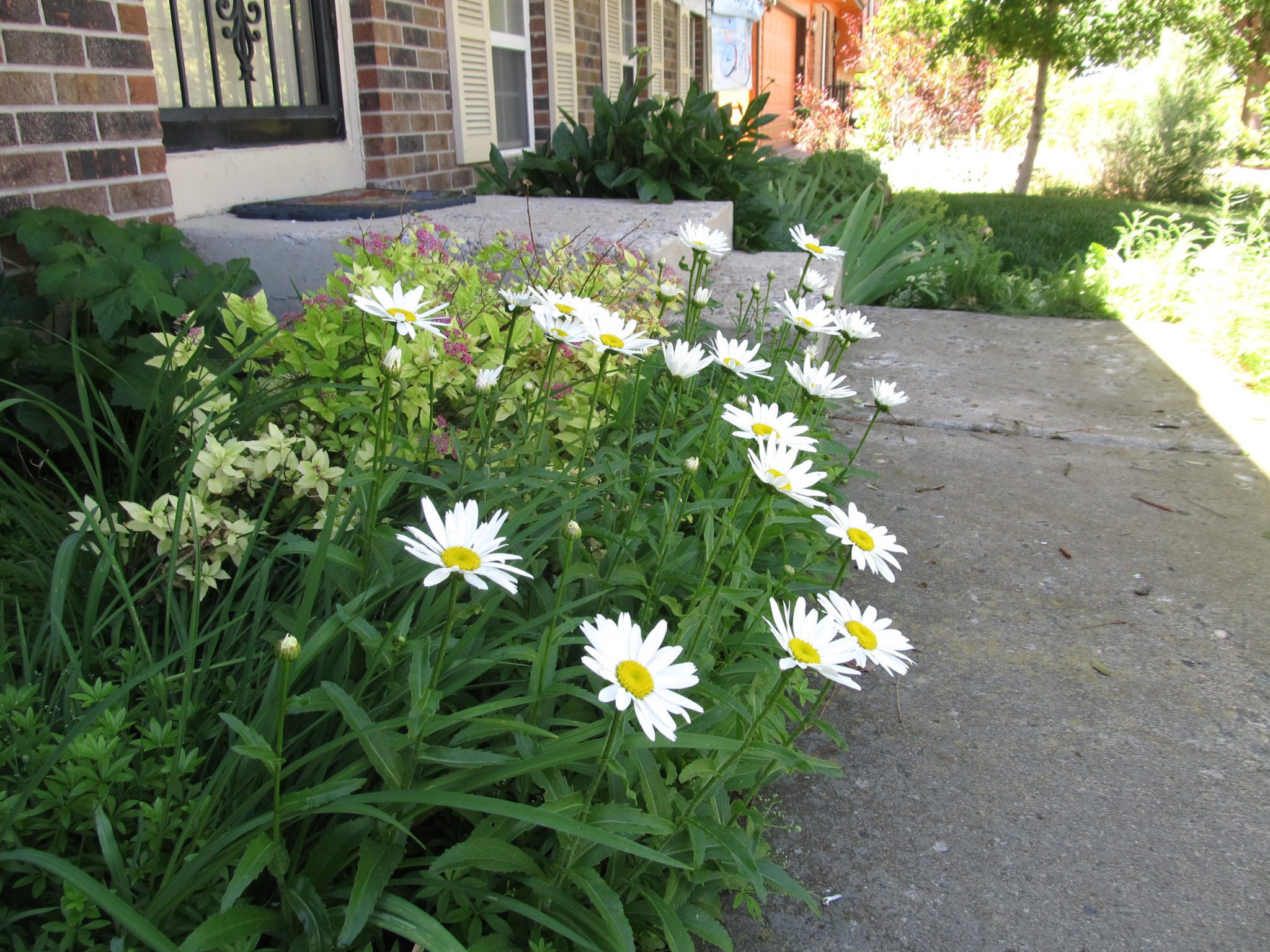
Summer has finally arrived. The days are long, the sun is bright and our gardens are hitting their stride. The cold and dreary days of winter have faded into the mists of ancient history (let us not furrow our brow by worrying about what comes six months from now. Focus on the present, people!).
It has been my observation that when summer finally does arrive, my garden (much like its gardener) seems to slow down and chillout a bit. The mad rush of spring fades to a more languid pace. Gone are the quick blooming plants such as hyacinths, daffodils, tulips, irises and peonies, and in their place are the longer blooming summer perennials. A big reason for perennials taking the foot off the gas pedal is simple: because it’s fricking hot! They don’t want to put on fast growth during the heat of summer because that taxes their ability to take up water and nutrients. They prefer to put on the majority of the their growth in the cooler months of April and May. Hence the mad rush of spring. Plants may not have brains, but they ain’t dumb.
What is interesting to me is that in general (note that I said in general), perennials that bloom after the summer solstice tend to bloom much longer than perennials that bloom in spring. For example, echinaceas (coneflowers) and Shasta daisies can bloom for a month or more. The daylily, whose flowers only last a single day (hence the name) can set new flowers for several weeks. Yarrows have been known to bloom for up to 10 weeks. My Black-eyed Susans usually start to bloom in mid-July and can, under the right conditions, bloom all the way into October!
Contrast that to the short bloom times of most spring flowering plants (such as daffodils, tulips and peonies) whose flowers usually last around a week or so. For example: irises may bloom for roughly a week, but their flowers at best only last up to three days only if the weather cooperates.
(Of course, none of this applies to most vegetables and annuals. Since these plants only live for a single growing season, they grow and bloom their fool heads off in a desperate sprint to bloom and set seed before they die).
In addition to the longer bloom times, many (not all) summer flowering perennials will re-bloom if you deadhead them regularly. For those of us who grew up before the advent of VHS recorders, spring flowers are like the holiday TV specials of our youth. If, for whatever reason, you didn’t get to watch “It’s the Great Pumpkin, Charlie Brown” or “Rudolph the Red Nose Reindeer”, well, tough luck kid. Maybe next year. Spring flowers are much the same. If you missed the spring flower show, you will just have to wait until next spring to catch it again. Oh, you can deadhead your irises and peonies to make them look tidier, but they ain’t coming back this year!
Some perennials that might rebloom if deadheaded regularly include roses, coneflowers, Black-eyed Susans, Shasta daisies and globe thistle. I’ll be candid; I am not very good about deadheading. For deadheading to be effective the gardener should go out every evening to pinch the spent blooms off, and this task to me is almost as tedious as weeding.
Now, let me give you a tour of the Vintage garden as seen in high summer:
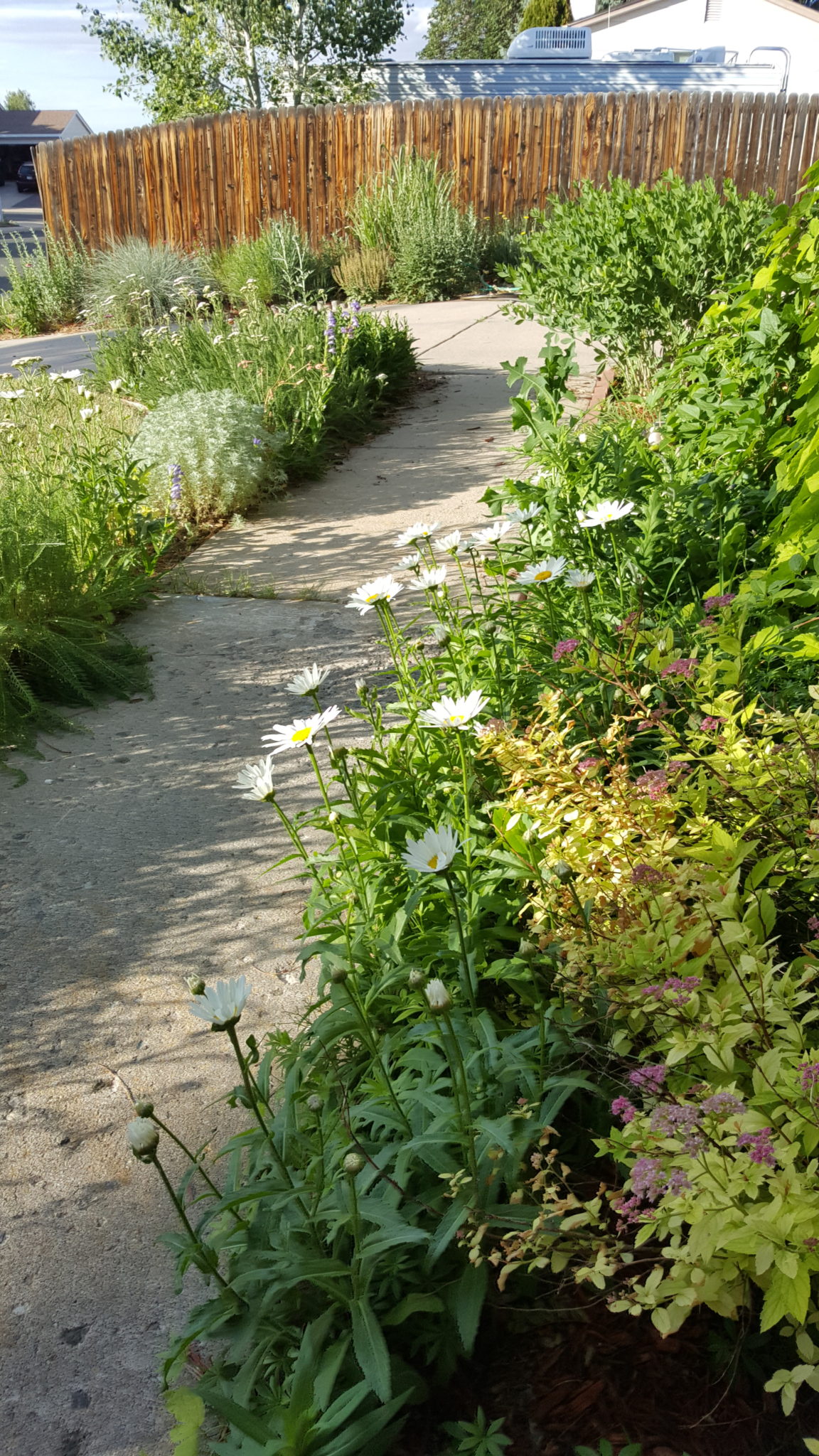
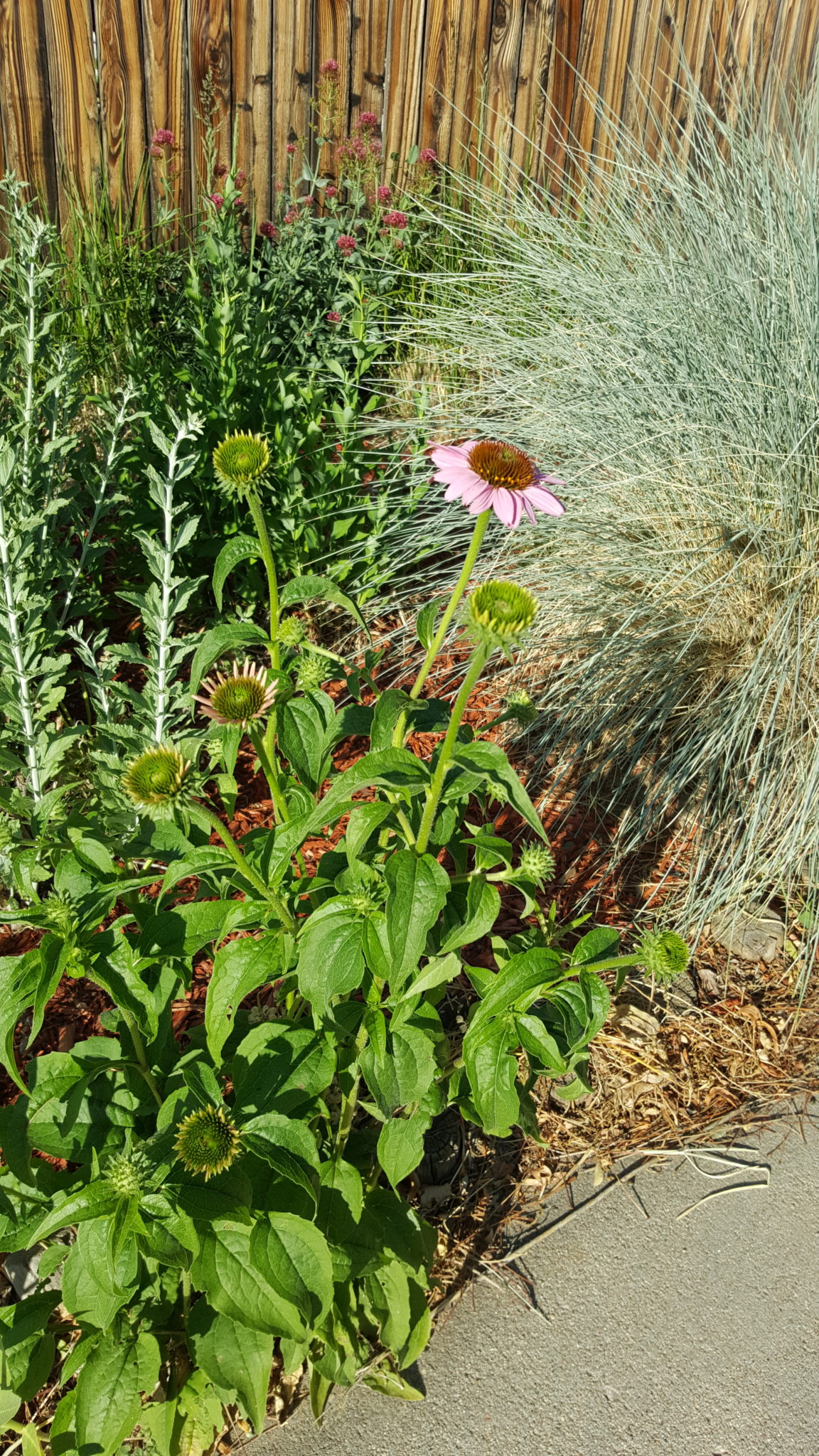
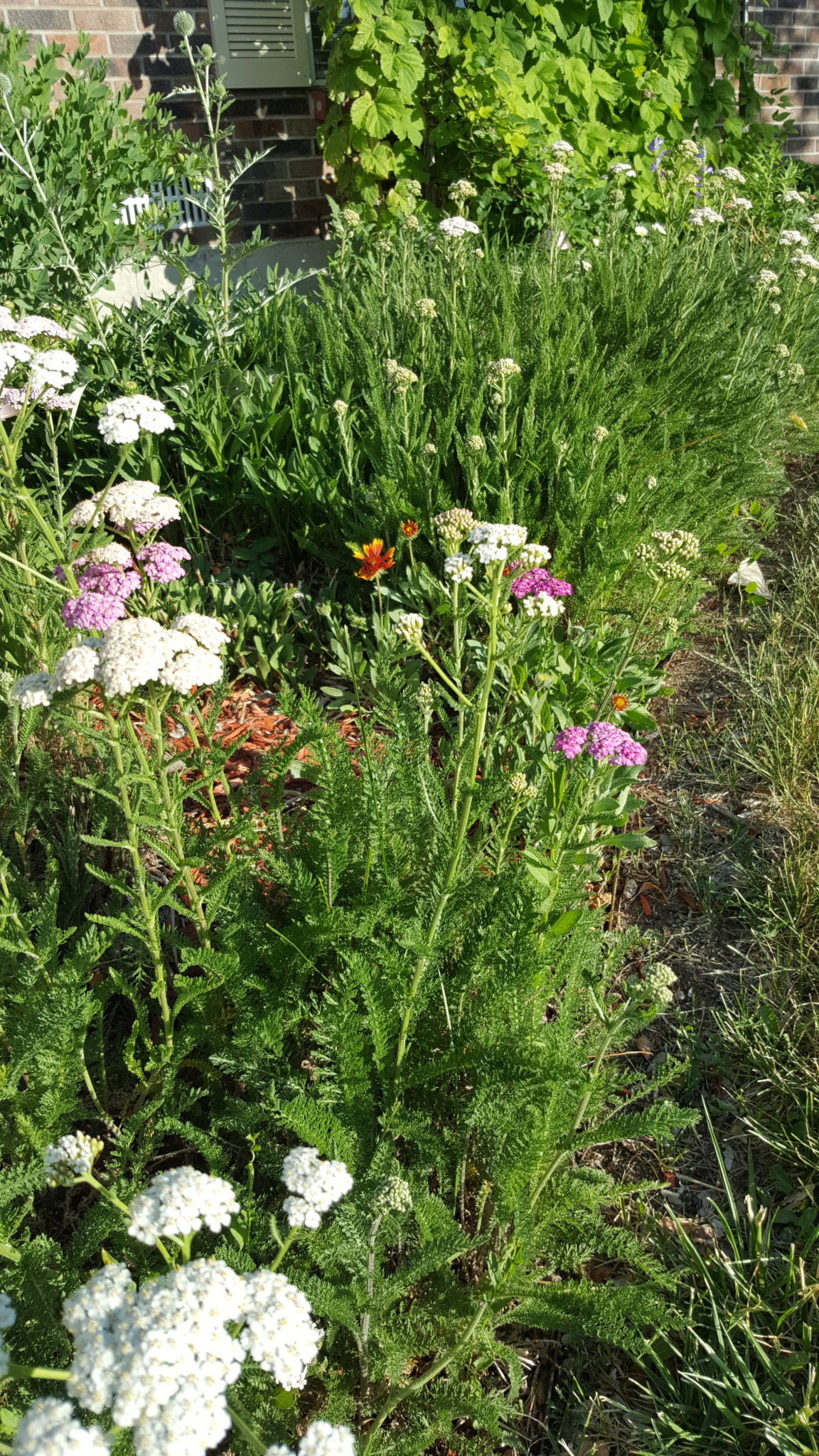
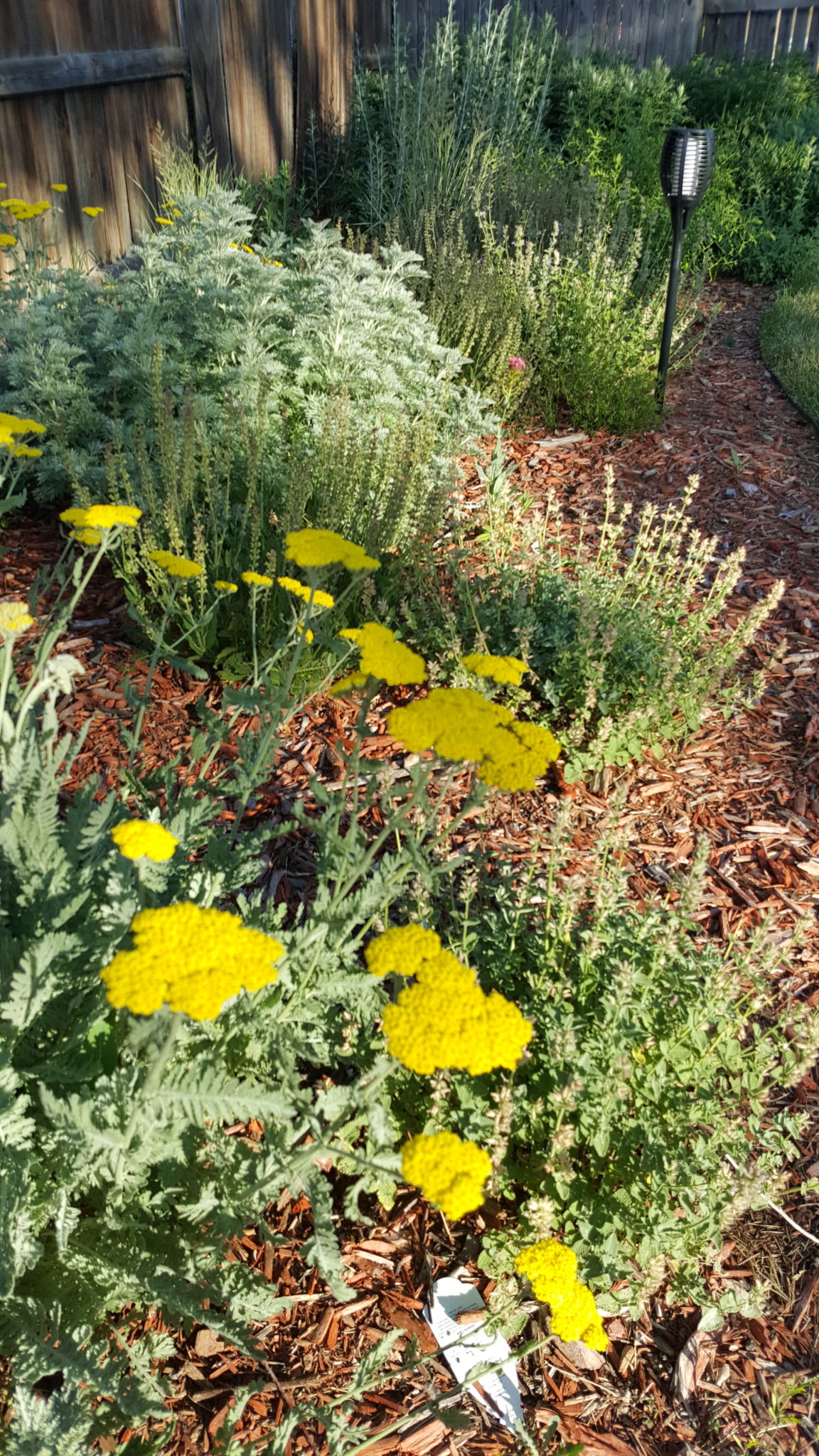
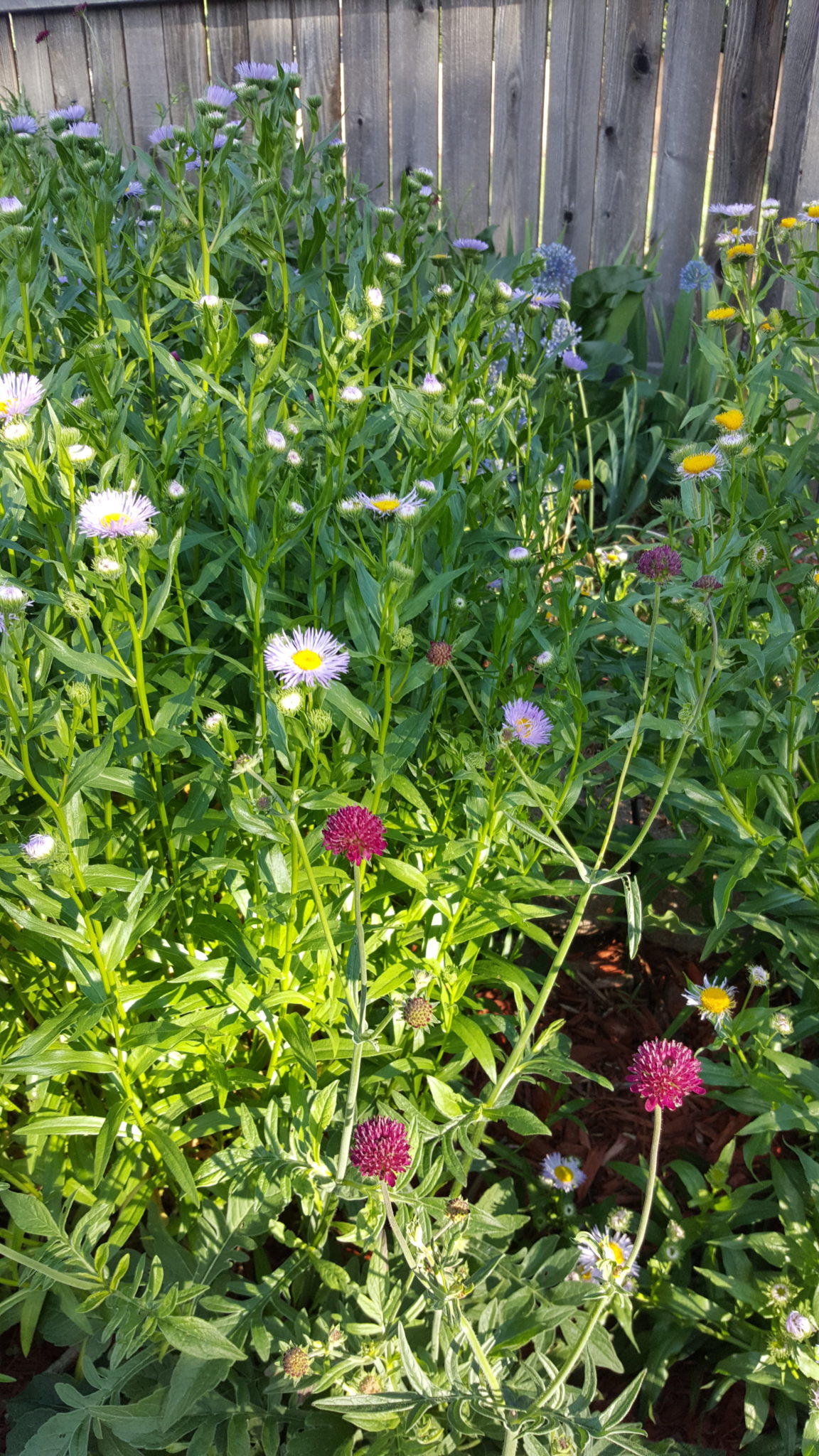
Blue alliums play peek-a-boo in
the back.
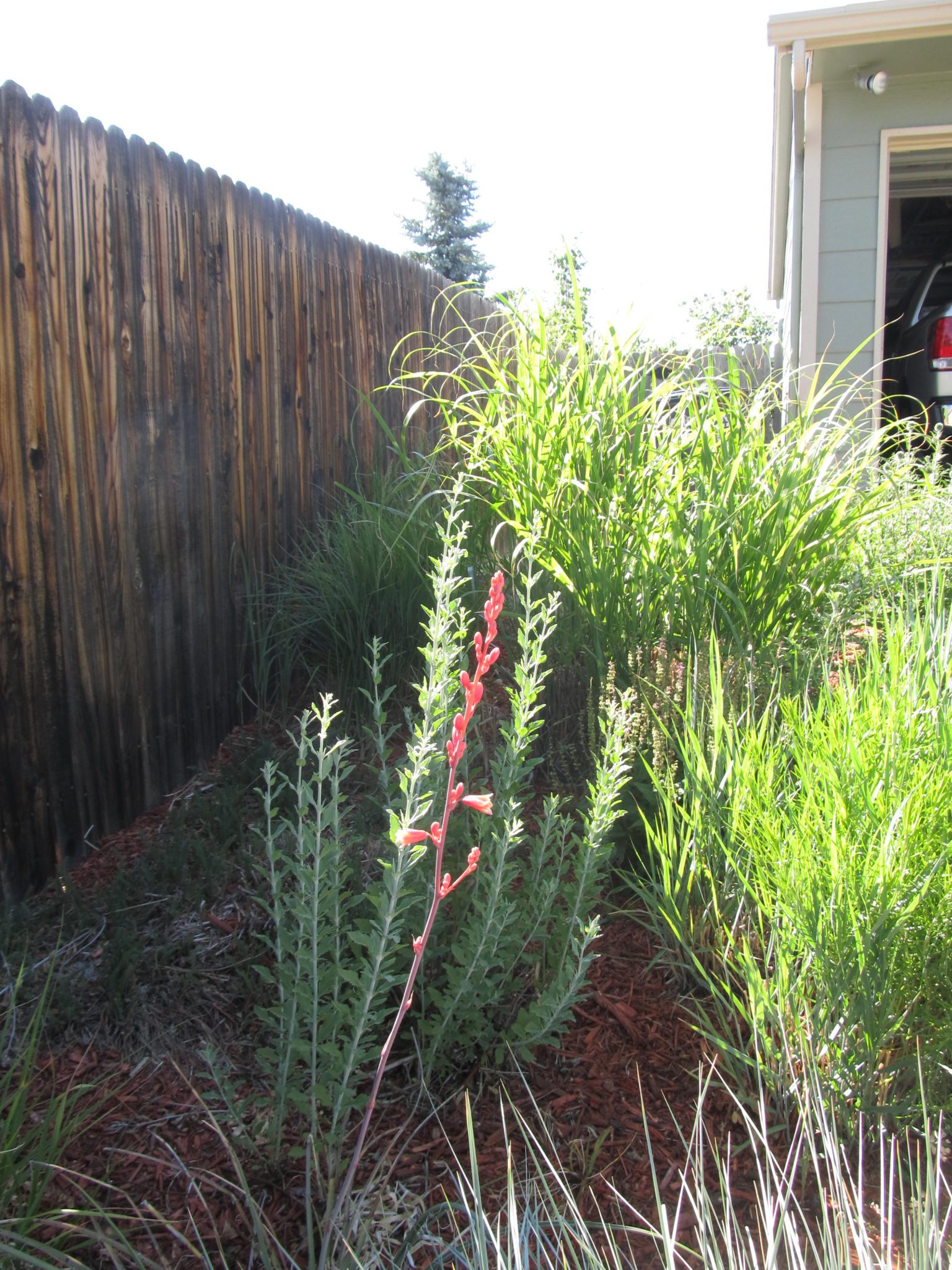
So that’s it for now.
I hope you are enjoying your summer so far. How does your garden fare?

